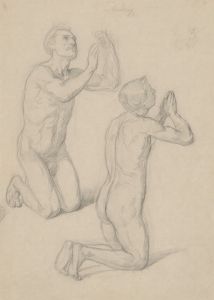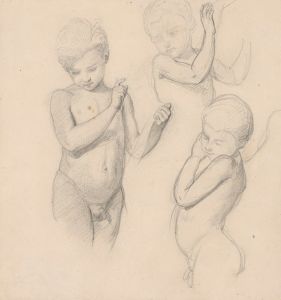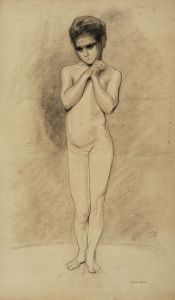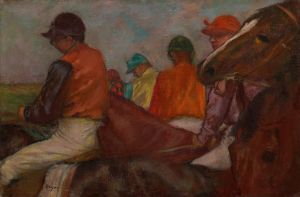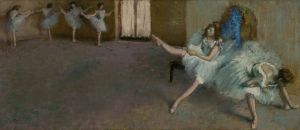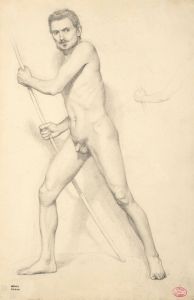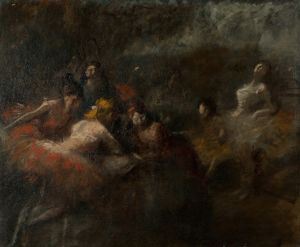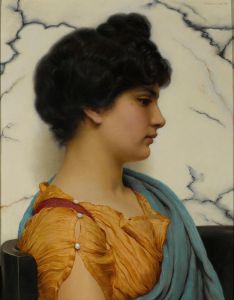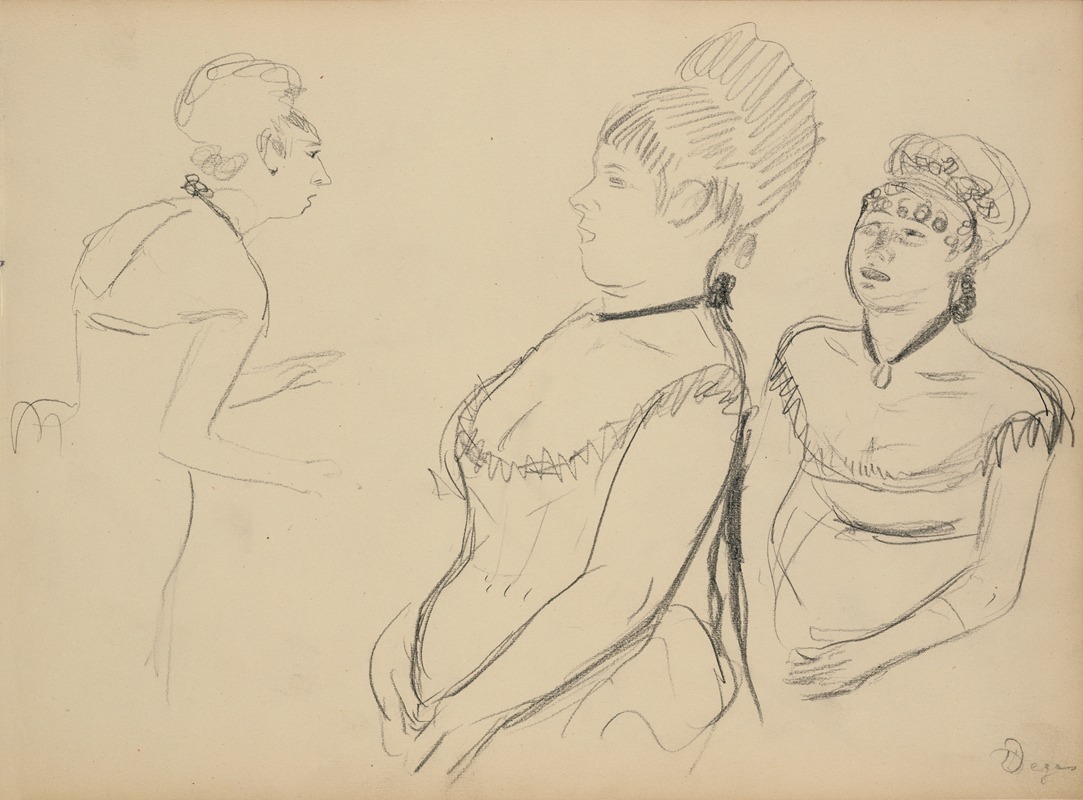
Three Sketches
A hand-painted replica of Edgar Degas’s masterpiece Three Sketches, meticulously crafted by professional artists to capture the true essence of the original. Each piece is created with museum-quality canvas and rare mineral pigments, carefully painted by experienced artists with delicate brushstrokes and rich, layered colors to perfectly recreate the texture of the original artwork. Unlike machine-printed reproductions, this hand-painted version brings the painting to life, infused with the artist’s emotions and skill in every stroke. Whether for personal collection or home decoration, it instantly elevates the artistic atmosphere of any space.
"Three Sketches" by Edgar Degas is a notable work by the French artist, who is widely recognized for his contributions to the Impressionist movement. Edgar Degas, born Hilaire-Germain-Edgar De Gas on July 19, 1834, in Paris, France, is renowned for his mastery in capturing the human form in motion, particularly through his depictions of dancers, women at their toilette, and scenes of everyday life.
"Three Sketches" is a testament to Degas's skill in draftsmanship and his keen observational abilities. While the exact date of the sketches is not definitively known, they are believed to have been created during the late 19th century, a period when Degas was deeply immersed in exploring the nuances of human movement and expression.
The sketches are executed in a combination of mediums, including pencil and pastel, which Degas frequently employed to achieve a delicate balance of line and color. This choice of medium allowed him to experiment with texture and form, capturing the fluidity and spontaneity of his subjects. The use of pastel, in particular, became a hallmark of Degas's later works, enabling him to layer colors and create a sense of depth and vibrancy.
In "Three Sketches," Degas presents three distinct studies, each focusing on different aspects of the human figure. The first sketch might depict a dancer in a moment of repose, highlighting Degas's fascination with the ballet and his ability to convey the grace and discipline of the dancers. The second sketch could illustrate a woman engaged in a mundane activity, reflecting Degas's interest in the private, unguarded moments of everyday life. The third sketch might capture a fleeting gesture or pose, showcasing Degas's talent for rendering movement with precision and sensitivity.
Degas's approach to sketching was methodical and meticulous. He often created numerous studies of a single subject, refining his observations and experimenting with composition and perspective. This process allowed him to develop a deep understanding of his subjects, which is evident in the lifelike quality and emotional resonance of his finished works.
Throughout his career, Degas maintained a strong connection to the traditions of classical art, drawing inspiration from the Old Masters while simultaneously pushing the boundaries of contemporary art. His innovative techniques and keen eye for detail earned him a prominent place in the art world, and his works continue to be celebrated for their technical excellence and expressive power.
"Three Sketches" exemplifies Degas's ability to capture the essence of his subjects with economy and elegance. Each sketch serves as a window into the artist's creative process, offering viewers a glimpse of the preliminary stages that would eventually lead to his more polished compositions.
Today, Edgar Degas is remembered as one of the foremost artists of the 19th century, whose work has had a lasting impact on the development of modern art. His sketches, including "Three Sketches," remain highly regarded for their insight into the human condition and their contribution to the evolution of artistic expression.





